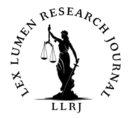-Written by
Sanjeevani Ojha
September 2024
In the digital age, the use of digital evidence in criminal trials has become increasingly prevalent. From social media posts to text messages, emails, and cloud storage data, the sheer volume and variety of digital evidence available to investigators and prosecutors has transformed the way crimes are investigated and prosecuted. However, the admission of digital evidence in court also raises important questions about reliability, authenticity, and potential biases. As technology continues to evolve, the legal system must keep pace ensuring that digital evidence is handled and presented in a way that is fair, trustworthy, and compliant with legal standards. This paper will explore the complex issues surrounding the admissibility of digital evidence in criminal trials, examining the legal framework, technical challenges, and best practices for collecting, analyzing, and presenting digital evidence in court.
HISTORY AND EVOLUTION IN DIGITAL EVIDENCE
The history of digital evidence dates back to the 1960s, when computers and digital storage devices first emerged. Initially, digital evidence was limited to mainframe computers and magnetic tapes, with minimal relevance to criminal investigations. However, as technology advanced and computers became more widespread, digital evidence began to play a larger role in criminal cases. In the 1980s, the rise of personal computers and digital storage devices like floppy disks and hard drives led to an increase in digital evidence being used in investigations. This was also the era when the first computer crimes, such as hacking and cyber theft, began to emerge. The 1990s and 2000s witnessed the internet and social media boom, generating vast amounts of digital data and transforming digital evidence into a crucial aspect of investigations. This period saw the introduction of email, instant messaging, and social media platforms, which became valuable sources of evidence in criminal cases. The mid-2000s saw the introduction of mobile devices and cloud storage, further expanding the scope of digital evidence. Smartphone and tablets became ubiquitous, and cloud storage services like Drop box and Google Drive became popular, leading to a vast increase in digital data being generated and stored. In recent years, the Internet of Things (IoT) and artificial intelligence (AI) have added new dimensions to digital evidence. IoT devices, such as smart home devices and wearable’s, have created new sources of evidence, while AI-powered tools have enhanced the analysis and processing of digital evidence.[1]
Throughout its evolution, digital evidence has become increasingly critical to criminal investigations and court proceedings. However, this growth has also presented challenges, such as ensuring the integrity and authenticity of digital evidence, addressing privacy concerns, and keeping pace with rapidly evolving technology. As a result, law enforcement agencies, legal professionals, and technology experts have had to adapt and develop new strategies, tools, and techniques to collect, analyze, and present digital evidence in a way that is reliable, admissible, and effective in court.
LEGAL FRAMEWORK FOR ADMISSIBILITY
The legal framework for the admissibility of digital evidence is rooted in traditional evidence law, with modifications to accommodate the unique characteristics of digital data. The framework requires that digital evidence be relevant, reliable, and authentic, with a clear chain of custody and proper handling to prevent tampering or alteration. Courts consider factors such as data integrity, system reliability, and user intent when assessing admissibility. Digital evidence must also comply with legal procedures and statutes, including search and seizure laws and data privacy regulations. In the United States, the Federal Rules of Evidence (FRE) and the Federal Rules of Criminal Procedure (FRCrP) provide the foundation for digital evidence admissibility, while international frameworks like the Council of Europe’s Convention on Cybercrime and the United Nations’ Budapest Convention on Cybercrime offer guidance for global digital evidence considerations. By navigating this legal framework, legal professionals and investigators can ensure that digital evidence is properly collected, analyzed, and presented in court to achieve justice in the digital age.
Digital evidence is recognized and admissible in courts under the Indian evidence act, 1872.
Section 65A & 65B of the Indian Evidence Act, 1872: These sections deal with the admissibility of electronic records. Section 65B provides the conditions under which electronic records can be considered as evidence.
Article 20(3) of the Indian Constitution: This article protects against self-incrimination, and its principles apply to digital evidence as well.
Article 21 of the Indian Constitution: It guarantees the right to life and personal liberty, which includes the right to privacy. The collection and use of digital evidence must respect these constitutional rights.
POTENTIAL BIASES AND CHALLENGES
BIASES
Confirmation bias: Investigators may be inclined to interpret digital evidence in a way that confirms their pre-existing theories or suspicions.
Technological bias: The use of specific software or hardware may influence the collection and analysis of digital evidence, potentially leading to biased results.
Human bias: Analysts’ personal experiences and biases may impact their interpretation of digital evidence.
CHALLENGES
Data integrity: Ensuring that digital evidence has not been tampered with or altered during collection, storage, or analysis.
Authentication: Verifying the origin and authenticity of digital evidence.
Chain of custody: Maintaining a clear and unbroken record of digital evidence handling and transfer.
Technical complexities: Keeping up with rapidly evolving technology and ensuring that analysts have the necessary expertise to properly collect and analyze digital evidence.
Legal complexities: Navigating varying legal frameworks and jurisdictional issues related to digital evidence admissibility.
Privacy concerns: Balancing the need for digital evidence with individual privacy rights and data protection regulations.
Data volume and complexity: Managing large amounts of digital data and extracting relevant information.
Contextual understanding: Ensuring that digital evidence is considered in the context of the entire investigation, rather than in isolation.DIGITAL FORENSICS
The admissibility of digital evidence is a complex and multifaceted issue. Legal frameworks governing digital evidence vary across jurisdictions, and authentication and verification methods are crucial to ensuring the integrity of digital evidence. Digital forensics plays a critical role in collecting, analyzing, and preserving digital evidence for legal proceedings. Effective courtroom presentation strategies are essential for presenting digital evidence in a clear and compelling manner. Despite these efforts, challenges and limitations persist, including data privacy concerns and technical complexities. Case studies highlight the successes and challenges in admitting digital evidence, and best practices are essential for law enforcement, legal professionals, and digital forensics experts. Finally, emerging trends and technologies, such as AI-generated evidence and block chain-based authentication, will shape the future of digital evidence admissibility.
PRESENTATION AND REPORTING
The presentation and reporting of digital evidence are critical components of the digital forensic process, as they enable legal professionals, investigators, and jurors to comprehend complex technical evidence. A comprehensive report should outline the findings, methods, and conclusions, accompanied by visual aids such as charts, graphs, and screenshots to facilitate understanding. When presenting digital evidence in court, experts must clearly explain technical concepts, using analogies and examples to illustrate key points. The report and presentation should also address issues of authenticity, integrity, and chain of custody to establish the reliability and admissibility of the evidence. By presenting digital evidence in a clear, concise, and compelling manner, digital forensics experts can help ensure that the evidence is admitted and its significance is understood by the court, ultimately contributing to a successful investigation or legal proceeding.
CASES
Anvar vs Basheer: The Supreme Court held that electronic evidence without certification under
Section 65B cannot be proved by oral evidence.[2]
Parliament attacks case: The Supreme Court admitted Call Detail Records (CDRs) without following the procedures of Sections 65A and 65B. However, this position was highly criticized and overruled in the Basheer case.
Shafhi Mohamad case: The Supreme Court said that a party who does not possess the device from which the document is produced need not produce a certificate under Section 65B (4) of the
IEA, 1872. However, this position was overruled by the Supreme Court in Arjun Panditrao Khotkar vs Kailash Kushanrao Gorantyal and others.
Arjun Panditrao Khotkar vs Kailash Kushanrao Gorantyal and others: The Supreme Court held that the required certificate under Section 65B (4) is unnecessary if the original document itself is produced.
Email and Electronic Records as Evidence (High Court of Calcutta): The court held that an email downloaded and printed from a person’s email account can be proved by virtue of Section 65B read with Section 88A of the IEA, 1872.
Tape Recorded Conversation (Eobeon): The court held that tape-recorded conversations should be adequate to form a fair and reliable assessment of the conversation.
[1] https://en.wikipedia.org/wiki/Digital_evidence
[2] https://indiankanoon.org/


